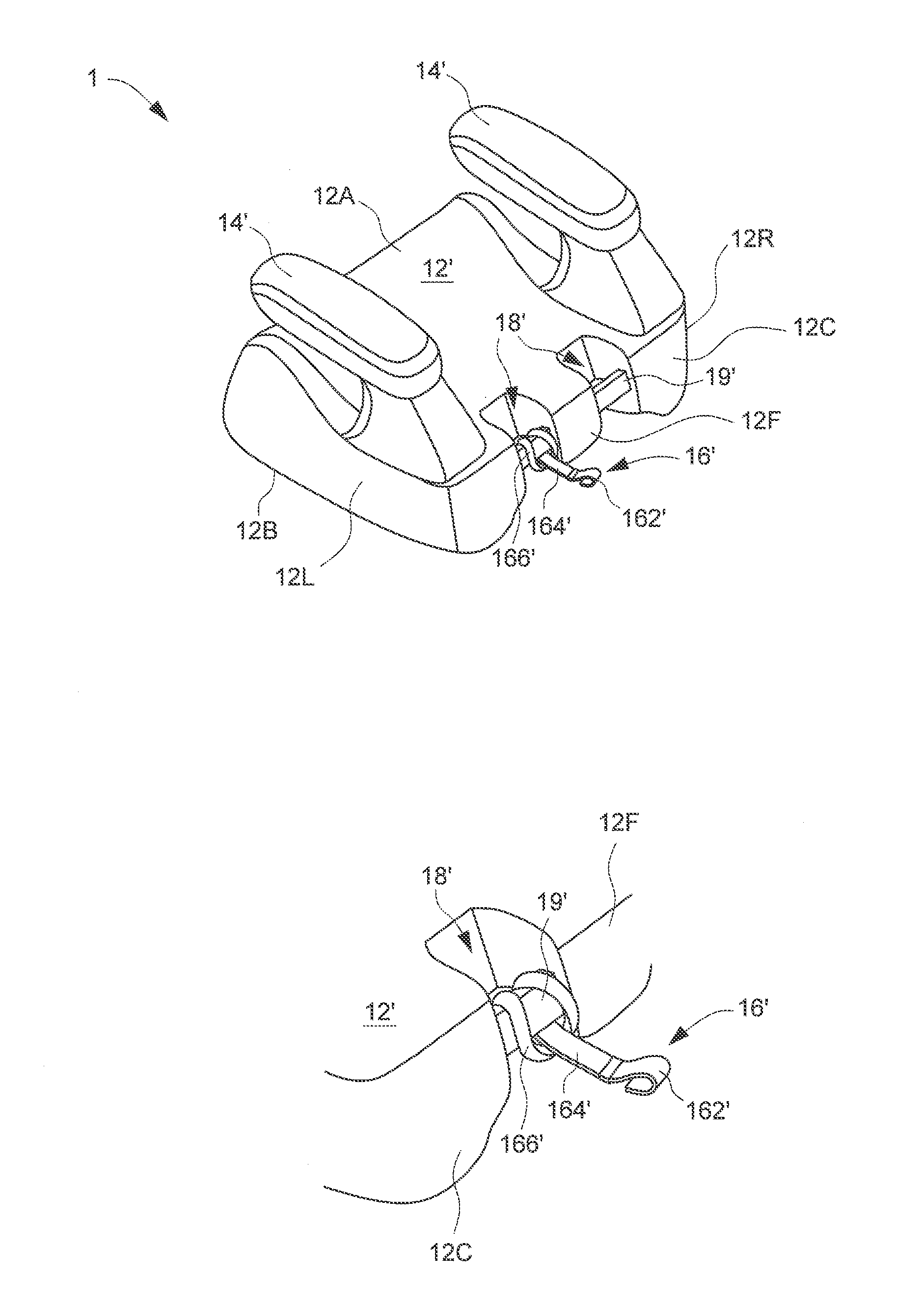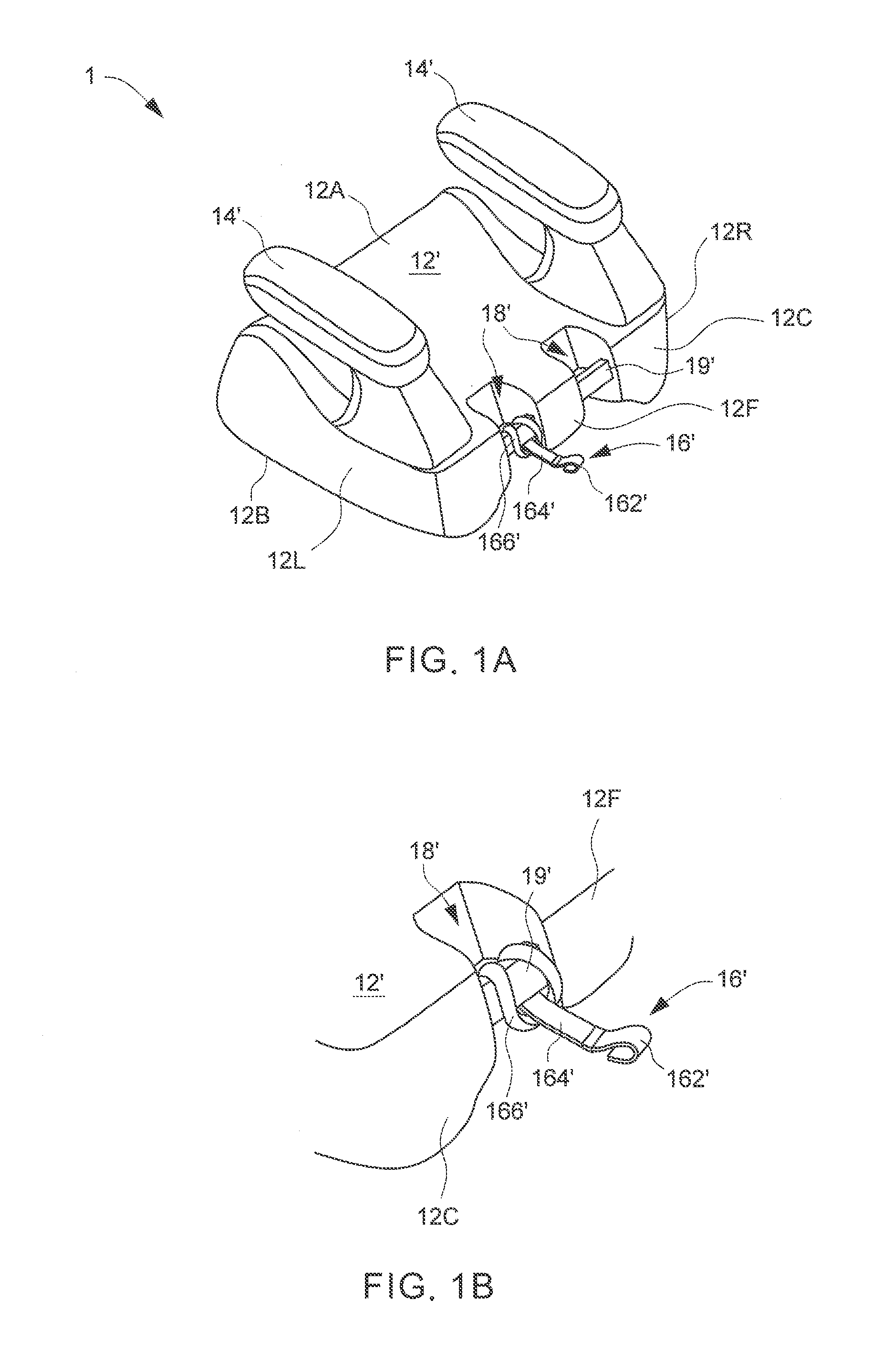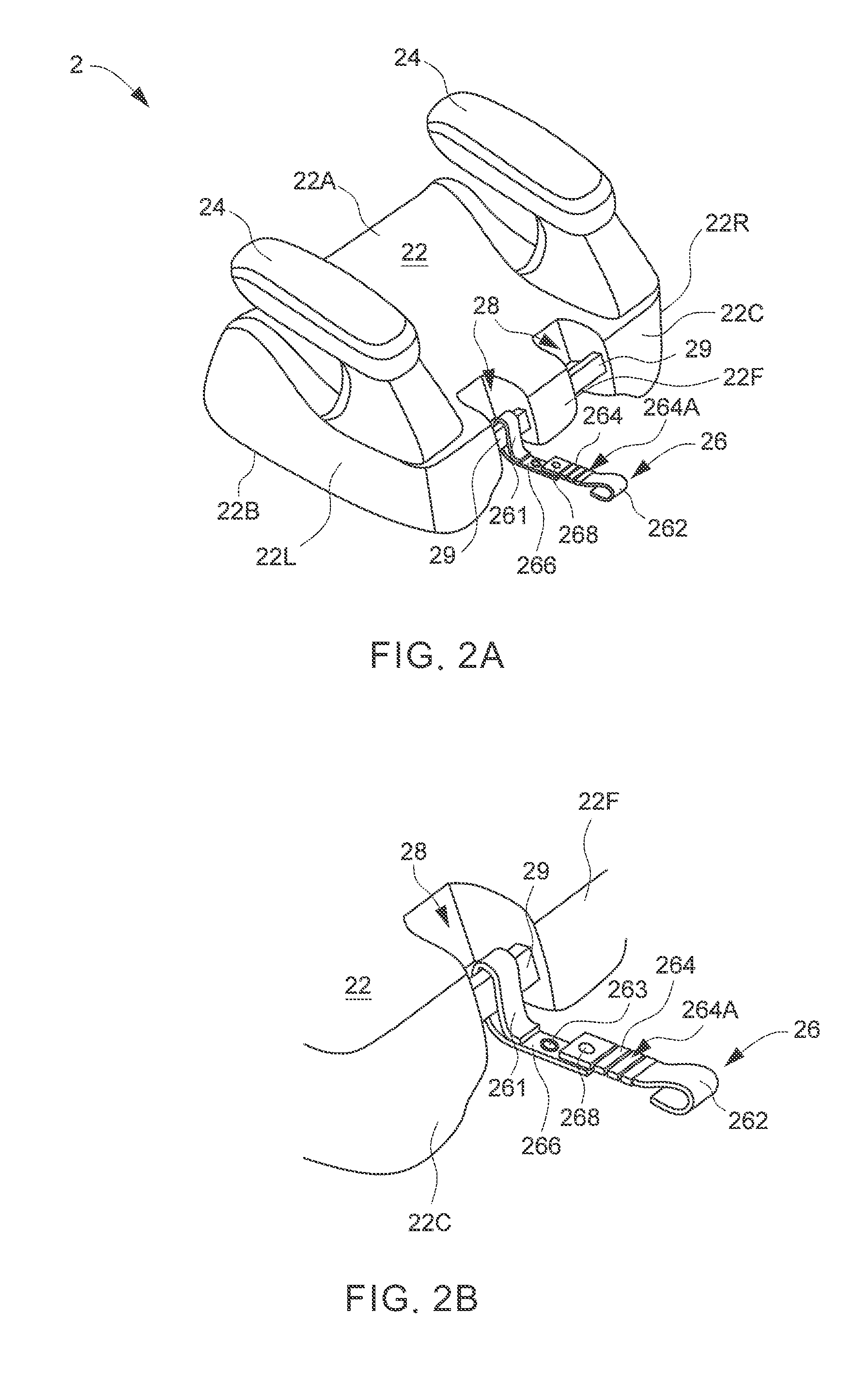Child Seat Having an Anchoring Harness
a child seat and anchoring harness technology, applied in the field of child seats, can solve the problems of not being able to sustain the pressure applied by the seat belt, the size of the child safety seat may not be adapted to seat the child having a larger body, and the use of the vehicle seatbelt is not adapted
- Summary
- Abstract
- Description
- Claims
- Application Information
AI Technical Summary
Benefits of technology
Problems solved by technology
Method used
Image
Examples
Embodiment Construction
[0026]The present application describes child seats having anchoring harnesses. Embodiments of the child seat include a seat portion and an anchoring harness. The seat portion has an upper surface and a rear edge, and an armrest protruding from the upper surface. The anchoring harness can be attached with the seat portion at a location near the rear edge of the seat portion and the armrest. The anchoring harness can include a strap that is attached with the seat portion at one end, and is provided with a fastener at an opposite distant end. When the child seat is placed on a vehicle passenger's seat, the fastener can attach with an anchorage fixture of the vehicle, whereby the anchoring harness can hold the child seat in place.
[0027]FIG. 1A is a perspective view illustrating an embodiment of a child seat 1. The child seat 1 has no backrest, and can be used as a booster seat. The child seat 1 can include a seat portion 12′, two armrests 14′ and an anchoring harness 16′. The seat port...
PUM
 Login to View More
Login to View More Abstract
Description
Claims
Application Information
 Login to View More
Login to View More - R&D
- Intellectual Property
- Life Sciences
- Materials
- Tech Scout
- Unparalleled Data Quality
- Higher Quality Content
- 60% Fewer Hallucinations
Browse by: Latest US Patents, China's latest patents, Technical Efficacy Thesaurus, Application Domain, Technology Topic, Popular Technical Reports.
© 2025 PatSnap. All rights reserved.Legal|Privacy policy|Modern Slavery Act Transparency Statement|Sitemap|About US| Contact US: help@patsnap.com



